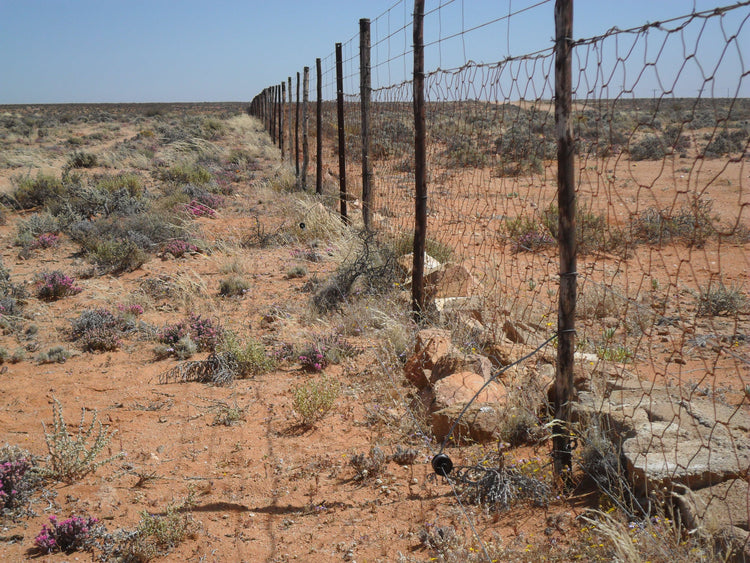Mistakes to Avoid with Electric Fencing

With 7 years of experience assisting in building hundreds of kilometres of smooth-galvanised wire electric fence, I have seen just about every fencing mistake possible, and I continue to see folks make many of the same common mistakes. I still make mistakes myself, because I am constantly challenging myself to make fencing easier, faster, stronger and safer.
High-tensile, smooth wire, electric fencing is the fastest and most affordable fence that I know about, and its technology has drastically improved over the past 10 years. However, many folks are hesitant to use it because they remember old failures e.g. wires breaking, energizers starting fires, wet vegetation shorting out the fence and other troubles.

With a little commitment and a modest investment in time to learn how to use this new technology, you can save thousands of Rands and hours of maintenance time by making electric fencing work for you. Here are the common mistakes that you should avoid so you don't have to learn the hard way:
POOR EARTH GROUNDING
Lots of folks (including me) still think you can skimp when it comes to adequate earth grounding. What we must all learn to do is install several ground rods with at least three that are 1m long, galvanized and attached with good ground clamps. The electricity must complete a full circle back to the charger through the ground. Poor grounding gives weak shocks.

USING DIFFERENT TYPES OF METALS
Do not do it. When you hook up steel wire to copper, electrolysis happens and the metal becomes corroded, resulting in poor contact and weakening shocking power.
INADEQUATE ANIMAL TRAINING
Each animal must learn that the fence hurts. To help with training, build a handy training fence preferably on heavy, wet soil, flag the fence for visibility and force the animal to try and cross the fence.
FENCE POSTS TOO FAR APART
Well-intended government agencies recommend lots of fence posts in their fencing specifications. Spacing of 30m on flat land is just too close because you want the fence to act like a rubber band. When something runs into the wire, you do not want to break all the insulators or knock posts out of the ground. If the posts are spread far enough apart, around 40m, the wire will bend but then return to its original position.
WIRES TIED TO EACH FENCE POST
To maintain elasticity (the rubber band effect), wires must float past each fence post by using the correct insulator for the purpose.
BUILDING NEW FENCES NEAR OLD EXISTING FENCES
Old fence wires seem move around a lot and meet the new electrified wires. This almost always causes a complete short in the fence, and off go your animals.
BOTTOM WIRE IS IN CONTACT WITH HEAVY, WET VEGETATION
Wet grass will suck a lot of juice out of any energizer. Hook up the lower wires separately from the rest of the fence and install a switch for the lower wires which you can turn off when the grass is tall. Gallagher has a unique product called the Flood gate controller to help with this problem. The best outcome is to keep your fence as clean as possible for the most effective operation.

POOR QUALITY INSULATORS
Be careful here. Sunlight deteriorates plastic so it's better to buy good quality, long-lasting insulators. Usually, black ones are treated to resist degradation by ultraviolet light. I have found that poor quality insulators turn white or clear after a few years in direct sunlight. Do not use plastic PVC pipe as it's built for water and not fencing. Each insulator is specifically designed for a purpose.

SOLAR PANELS NOT DIRECTLY FACING THE SUN
This seems almost too obvious to be a problem, but a solar panel will not function at its full potential if not properly installed. Please read the instructions that accompany your panel, do not simply guess if you have done it right. Always keep them cleaned for maximum effectiveness.
KINKS IN HIGH TENSILE WIRE
Any small kink in stiff wire will cause a break. Avoid hitting the stiffer wire with a hammer as this will easily damage the wire. The best solution is to cut out the damaged section of high tensile wire and splice it. Incidentally, I have found that a hand-tied square knot makes the strongest splice.
INSTALLING IN-LINE STRAINERS CLOSE TOGETHER
If in-line strainers are installed one above the other, they will sometimes hook up together. Separate in-line strainers by a fence post and they will never catch on each other.
WIRES TOO CLOSE TO EACH OTHER
Keep your live and earth wires at least 100mm apart.
NO VOLTMETER
A voltage meter checks how hot a fence is. Without a voltage meter, you are just guessing. In all practices, to measure is to know best.
WIRE TOO SMALL
The larger the wire, the more electricity it will carry. Do not skimp.
INADEQUATE ENERGIZER
The smaller the energizer, the lower the output. Do not skimp here because animals will think a smooth wire fence is a joke without a strong bite and they will walk right through it.
Your Gallagher energizer should be low-impedance, high output, come from a dependable Gallagher supplier and have a 3-year warranty and replaceable components. Please make sure you buy the correct energizer for the application, to ensure the correct output is being supplied to the fence. For example, during a rainy year you may have lots of plant growth touching the wires. This is when you will need extra power to shock through the heavy, wet vegetation. It is also handy to have an extra charger on standby if yours needs repairing. Expect some breakdowns, especially from lightning. Take a look at our lightning protection devices for extra protection from the elements.
Do not be afraid to try electric smooth wire fencing. Find a good Gallagher supplier and learn some of the tricks of the trade. I know folks who hate electric fencing but their pocketbook is not big enough to build a conventional fence, which may cost up to R3 per walking meter.
The next time your bulls get in a fight with the neighbour’s bulls and tear down all the fence, remember that most animals will learn not to touch a wire with 5,000 volts running through it.
If you need further information, feel free to get in touch.


How can i get your product